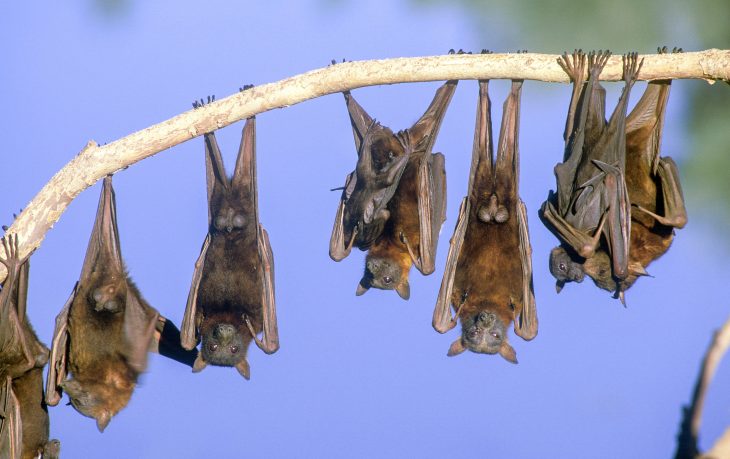
The little red flying fox is something of an oddity in Australian wildlife. Despite being eccentric, it’s not only harmless but also cute. This, in turn, makes it stand out among Australian animals, which have a reputation for being dangerous. Learn more about them with these 40 little red flying fox facts.
- Little red flying foxes typically stand up to 200 mm tall at most.
- They also have a maximum wingspan of up to 300 mm.
- On average, little red flying foxes weigh around 450 grams.
- The heaviest little red flying fox weighed an estimated 600 grams.
- With an ear length of up to 40 mm, little red flying foxes have long ears by Australian flying fox standards.
- The little red flying fox and its sister species’ fragmentary fossil record makes it difficult to trace their evolutionary history.
- Scientists think up to 98% of the flying foxes’ fossil records have become lost to environmental factors.
- Scientists have used genetics studies to fill in the gaps in the fossil record.
- The earliest ancestors of the little red flying fox evolved in Australasia around 31 million years ago.
- Most of the ancestral flying fox species migrated to Eurasia during the Miocene Epoch, around 5 million years ago.
- Scientists think that the flying foxes used island hopping to reach Eurasia from Australasia.
- As of 2016, it remains unclear how flying foxes migrated from Australasia to Africa.
- Most scientists think they migrated the long way around through Eurasia.
- Scientists generally think it’s unlikely flying foxes could have island hopped to Africa across the Indian Ocean.
- Today, the little red flying fox remains in Australia along with three other flying bat species.
- Unlike other flying foxes, little red flying foxes have no tails.
- Other names of the species are the collared flying fox and the collared fruit bat.
- They also have the scientific name Pteropus scapalatus.
- William Peters first described them in 1862.
- Scientists collected the first specimens for study at Cape York in Northern Australia.
Was this page helpful?
Our commitment to delivering trustworthy and engaging content is at the heart of what we do. Each fact on our site is contributed by real users like you, bringing a wealth of diverse insights and information. To ensure the highest standards of accuracy and reliability, our dedicated editors meticulously review each submission. This process guarantees that the facts we share are not only fascinating but also credible. Trust in our commitment to quality and authenticity as you explore and learn with us.
